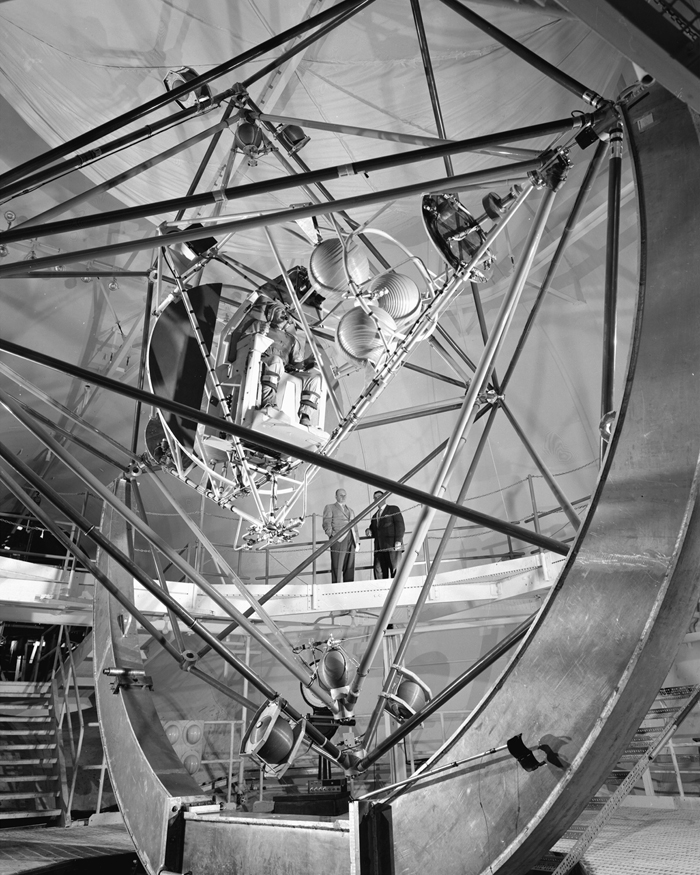Space History Photo: Project Mercury - AWT Gimbaling Rig

In this historical photo from the U.S. space agency, the Gimbal Rig, formally known as the MASTIF or Multiple Axis Space Test Inertia Facility, was engineered to simulate the tumbling and rolling motions of a space capsule and train the Mercury astronauts to control roll, pitch and yaw by activating nitrogen jets, used as brakes and bring the vehicle back into control. This facility was built at the Lewis Research Center, now John H. Glenn Research Center at Lewis Field.
Each weekday, SPACE.com looks back at the history of spaceflight through photos (archive).
Breaking space news, the latest updates on rocket launches, skywatching events and more!

The National Aeronautics and Space Administration (NASA) is the U.S. government agency in charge of the civilian space program as well as aeronautics and aerospace research. Founded in 1958, NASA is a civilian space agency aimed at exploring the universe with space telescopes, satellites, robotic spacecraft, astronauts and more. The space agency has 10 major centers based across the U.S. and launches robotic and crewed missions from the Kennedy Space Center in Cape Canaveral Florida. Its astronaut corps is based at the Johnson Space Center in Houston. To follow NASA's latest mission, follow the space agency on Twitter or any other social channel, visit: nasa.gov.
